2026WORKFORCE
TRENDS REPORT
Trend 2



New tools, new rules, new pressure
AI promises big gains in productivity and innovation. But for many employees, it’s also arriving with an unspoken goal: to free up not just time, but headcount. That makes it feel less like an opportunity and more like a source of fear and pressure.
Instead of easing workloads, AI often adds new demands. Teams are asked to deliver more while backfills pause and junior hiring slows. Employees are left covering gaps and learning new tools at the same time — a setup that fuels stress, slows progress, and chips away at confidence.
It’s a crunch moment: expectations are rising faster than the structures to support them.






Backfills on hold: cuts to roles seen as “AI-replaceable”
Many companies are holding off on backfilling roles to see what AI might replace. It’s a cautious “wait and see” approach that leaves remaining employees carrying extra work.
Teams are left to cover existing responsibilities while also figuring out how AI might replace these roles. This adds pressure, fuels skepticism, and leaves employees stretched across too much work with too few resources.






A constant catch-up culture is draining teams
Leaders want quick results from AI, but many employees are still figuring out where to start. Half say they need new skills just to manage their workload, and more than a third admit they can’t keep up with the expectations leadership sets.
This creates a cycle of constant “catching-up“: draining energy, adding stress, and making AI feel like a moving target instead of a clear solution.
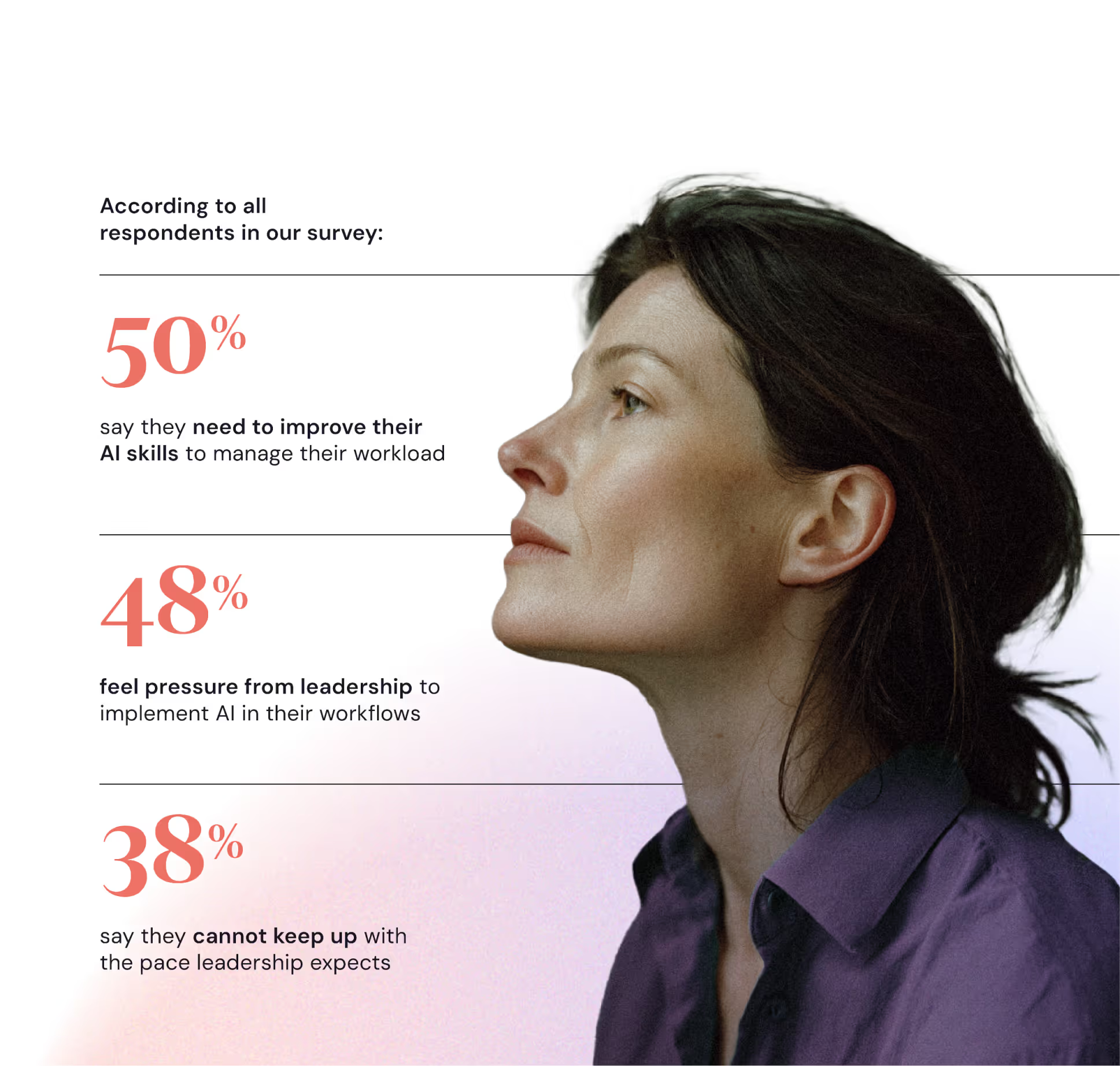





The promise of AI efficiency starts with more complexity
AI isn’t plug-and-play. While leaders expect it to save time, the transition often creates more work upfront.
HR reports the steepest rise in responsibilities since introducing AI, and more than half of employees across roles say they lose time to reviewing and correcting AI output.
Without realistic timelines and support, the early phase of AI adoption can feel like an obstacle course — and the promised efficiency has yet to materialize.
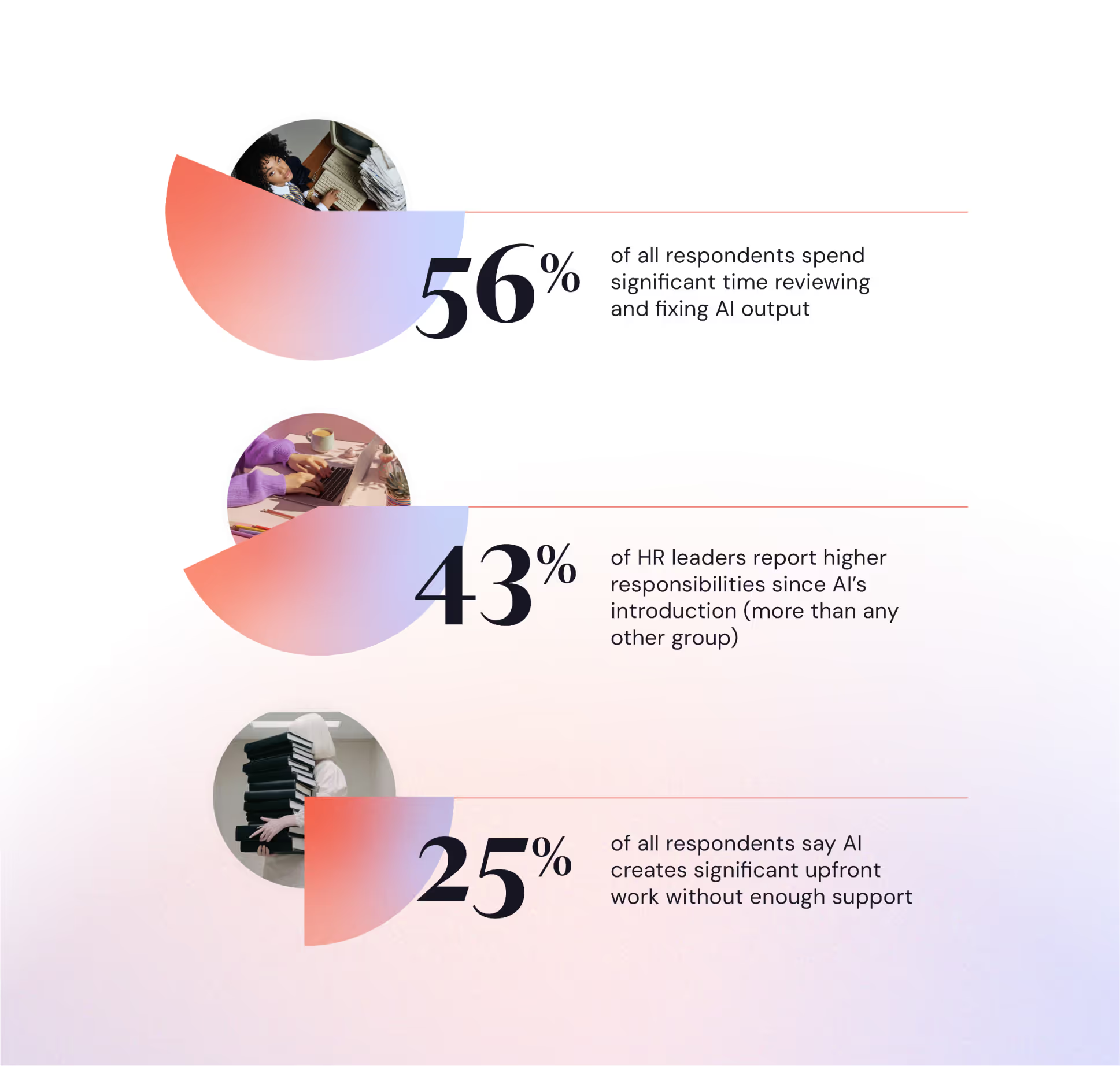





Unrealistic expectations are turning AI into a stress multiplier
As teams work through AI’s steep learning curve, many feel the targets they’re given don’t match reality.
More than half of employees report that leadership overestimates what AI can achieve — especially in the short term.
For those already adapting to new responsibilities and smaller teams, these high expectations add more strain, creating pressure to deliver results before the right conditions are in place.
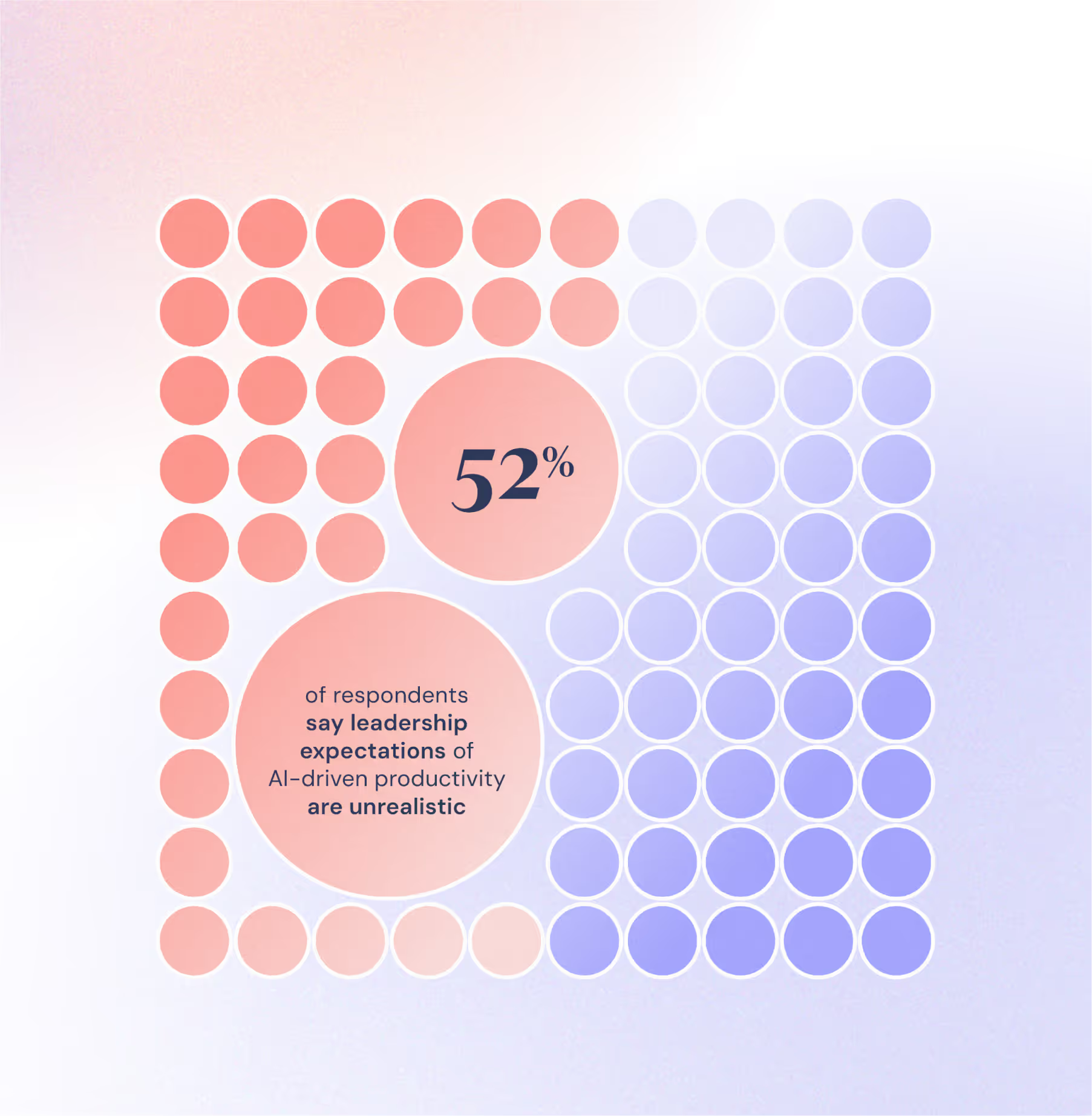





Layoffs shift down the ladder
AI is also impacting layoff decisions. Last year, cuts were concentrated at the top. This year, they’ve moved down into middle management and especially junior roles.
It’s a tough time to start a career, as opportunities shrink and early‑career paths narrow. And when early-career talent disappears, teams lose vital support, workloads rise, and the pipeline for tomorrow’s specialists and leaders weakens.
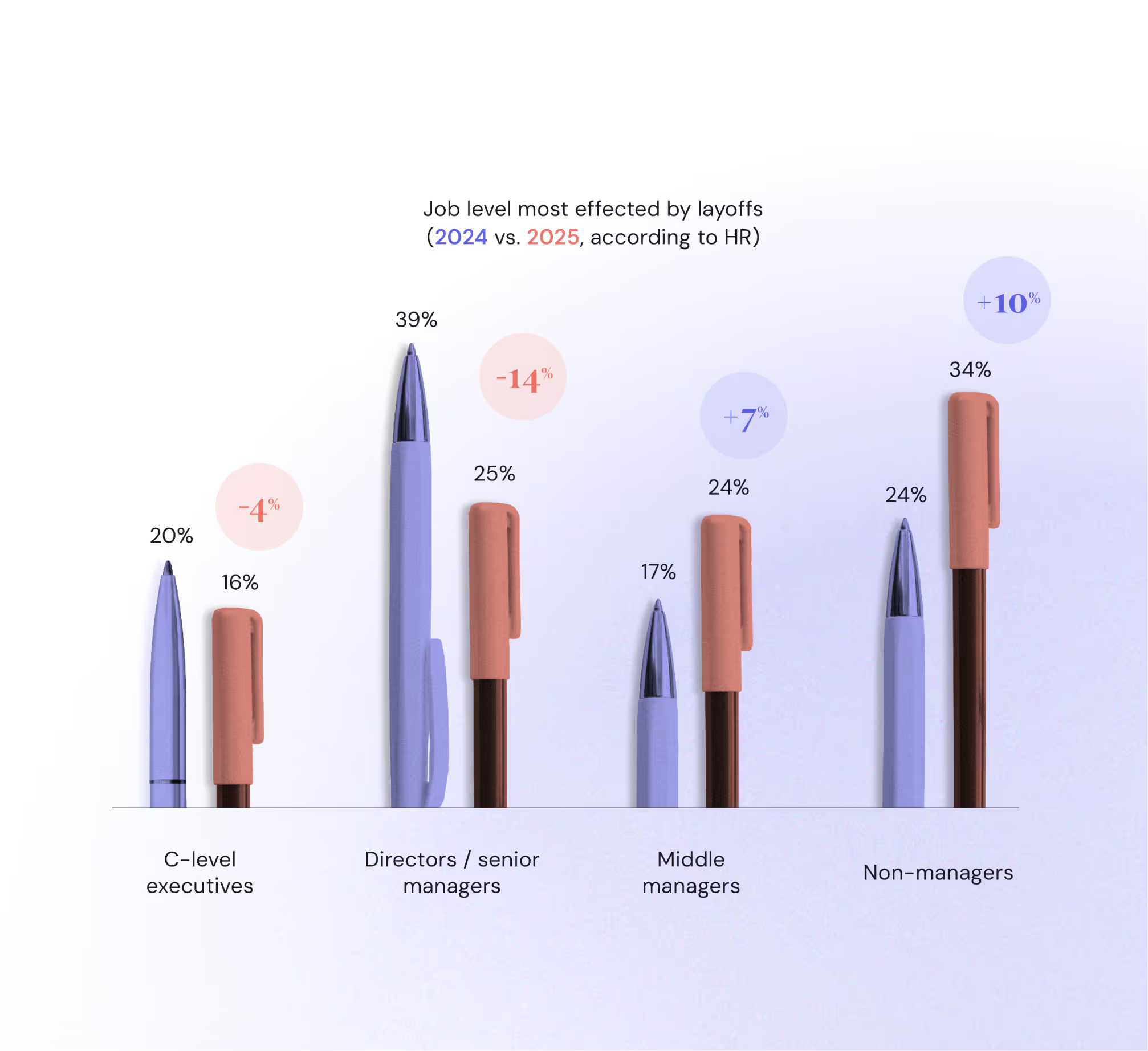





Short-term cuts, long‑term cost: junior talent is being replaced
These cuts reflect a growing belief that AI can take over entry-level work. Nearly half of HR leaders say junior roles are being reduced or removed with the expectation that AI will fill the gap.
Paired with an overestimation of AI’s capabilities, the result is often more pressure on mid-level employees, who are left to oversee and complete work that may look easily automated, but in practice still needs human judgment and oversight.
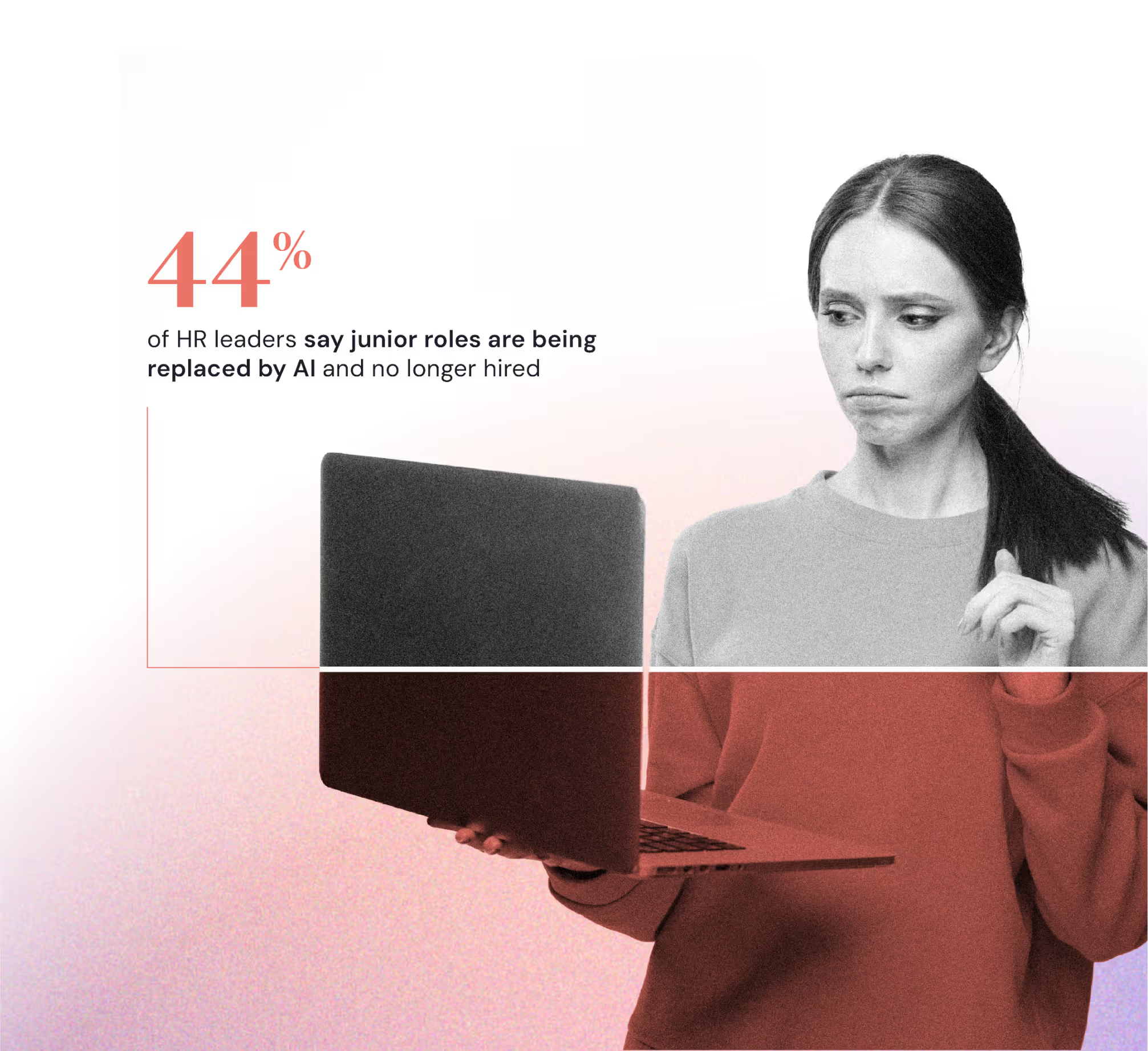





Anxiety about AI replacement still lingers
While fear of AI has eased since 2024, many employees remain uneasy about the long-term relevance of their roles.
This concern lowers confidence, makes people hesitant to share ideas, and slows innovation.
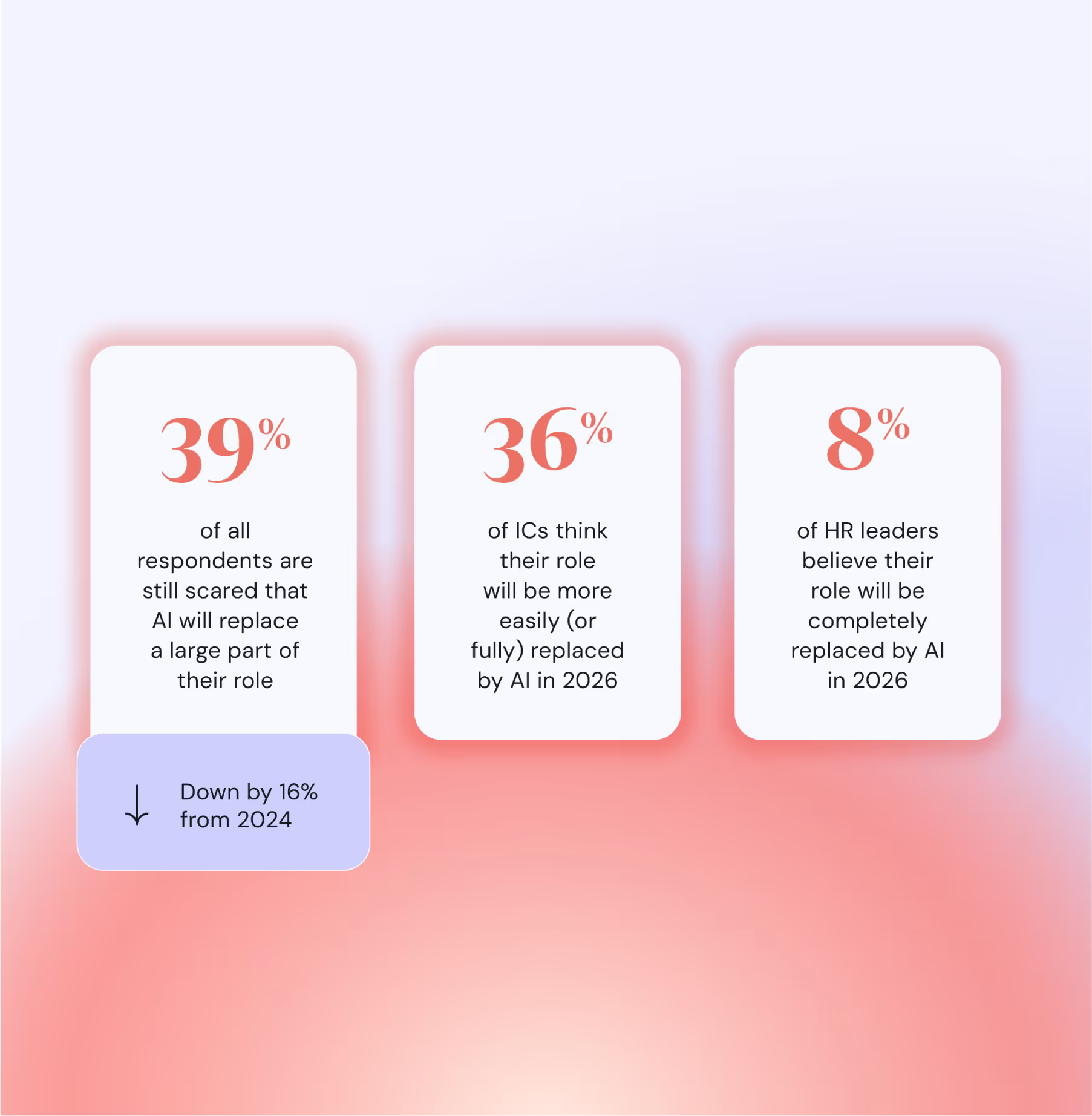





Mental health is worsening as workloads continue to rise
Nearly two-thirds of employees say their workload has grown over the past year. Half report feeling more overwhelmed, and managers now oversee larger teams as hiring stalls.
This constant overload chips away at focus, well-being, and the ability to perform at a high level.
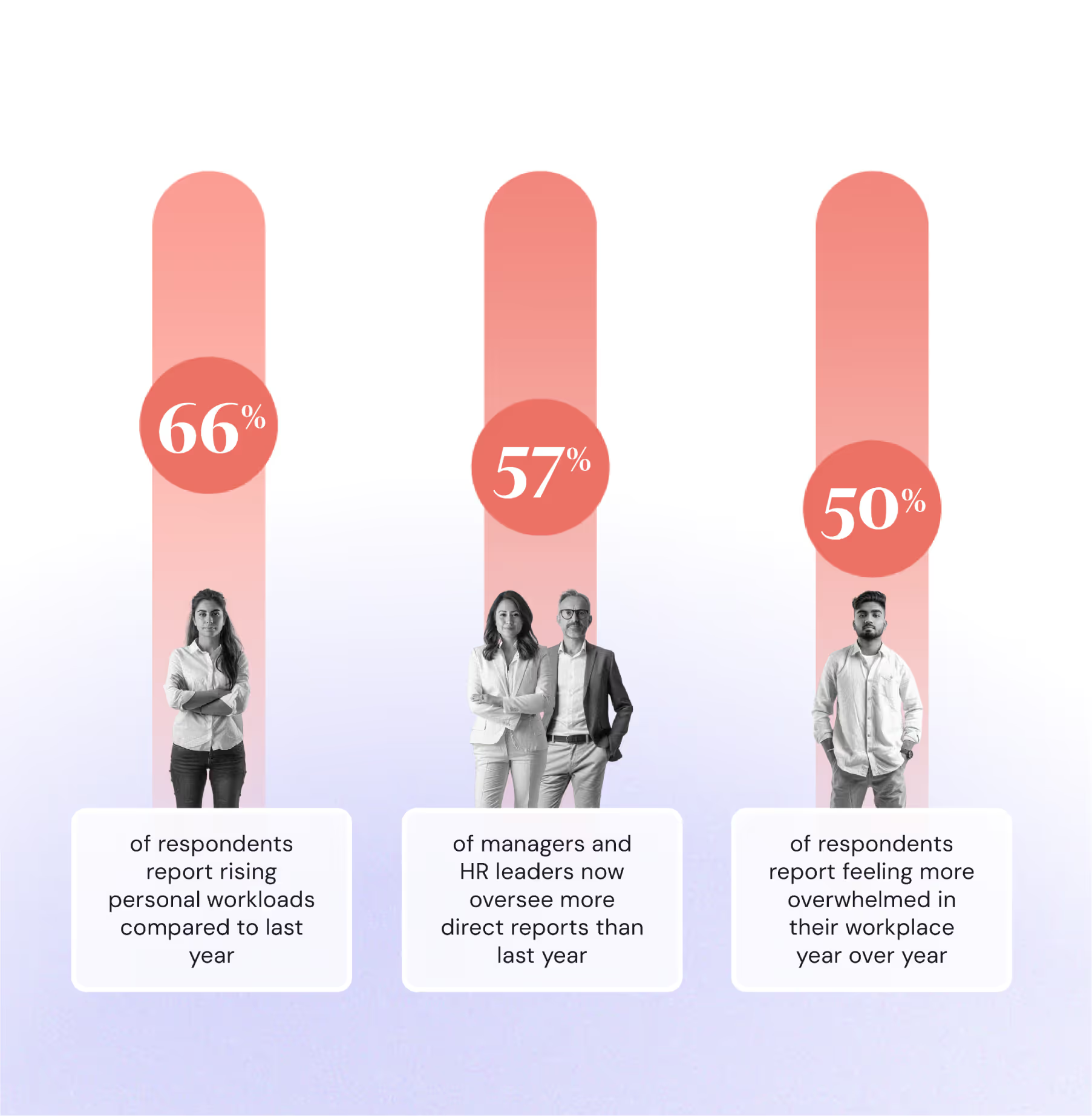





4 out of 5 employees don’t feel fully supported
As workloads rise, expectations increase, and new skills are required, many employees feel they’re navigating change on their own.
Four out of five don’t feel fully supported — a gap that erodes trust, makes it harder to perform, and slows innovation.
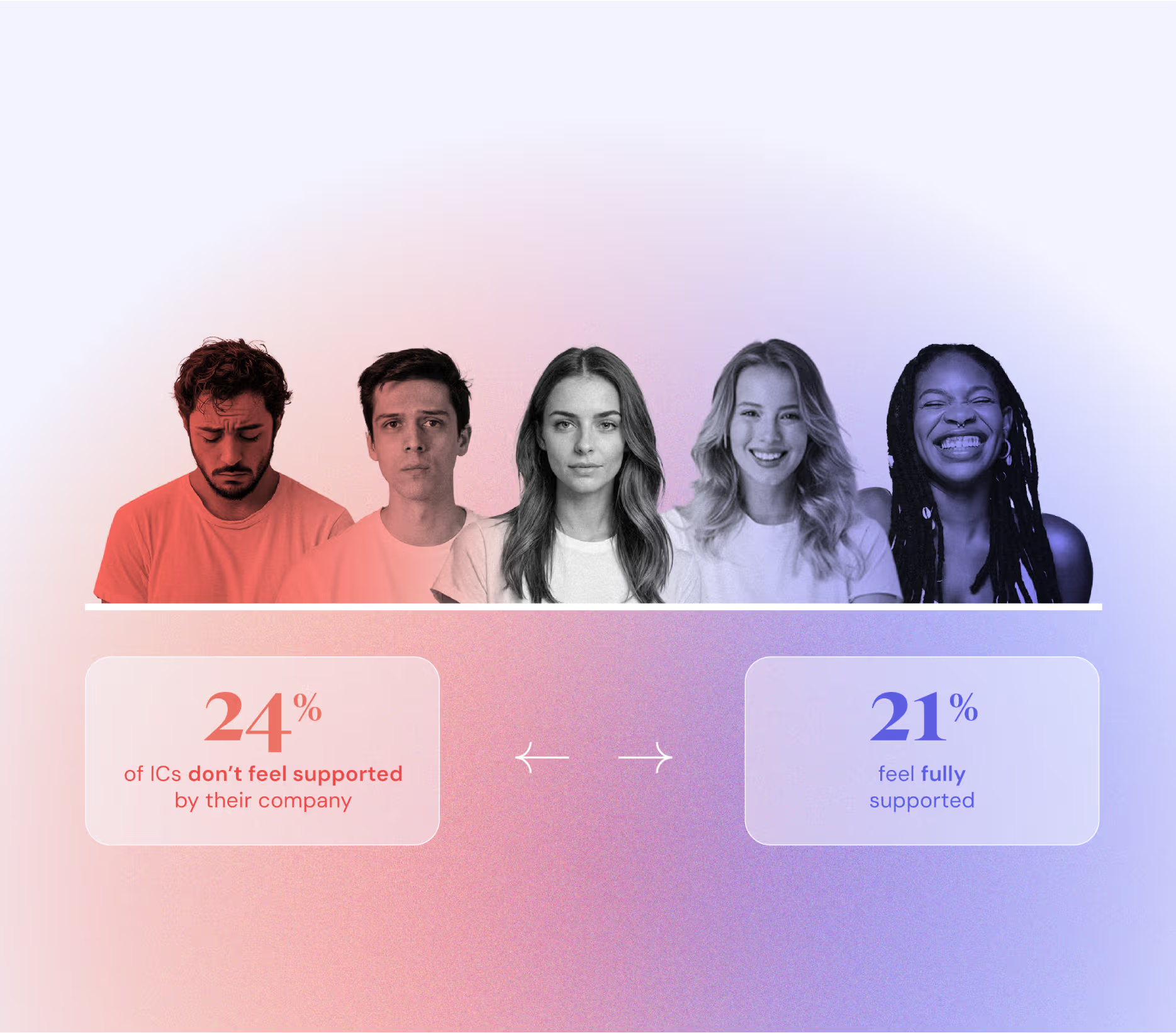





Turn insights into action
Navigate AI rollouts with clear ownership, training, and rules people can trust.
Set a realistic AI runway
Adopt a “pilot → standardize → scale” plan with defined workload offsets at each step.
Tie targets to measurable use cases with clear decision gates.
Protect teams when backfills pause
After someone leaves, reassess priorities: pause low-impact tasks, clarify new responsibilities, and decide which projects to deprioritize.
Make enablement visible
Publish a 90‑day enablement plan: who owns training, what “good” looks like by role, and where to get help (office hours, team AI champions).




If you can get prioritization right in a People team, you’re already 10x ahead.
When workload pressure builds and backfills aren’t an option, the smartest move is to step back and reassess. The goal is to keep the highest-ROI topics front and center, pausing or parking lower-value work.
From my experience, using the RICE framework (Reach, Impact, Confidence, Effort) alongside a clear stack-ranking system is one of the most effective ways to make trade-offs visible and remove ambiguity. The point isn’t to squeeze more out of less, but to make smarter choices with the capacity you have.
Transparency is equally important: share your priorities openly with the business, explain why certain work has been paused, and tie it all back to company goals and values.
I’ve found this approach not only sets realistic expectations but also reduces the pressure managers and ICs feel when everything seems urgent. It also helps you drive positive value perception and be seen as strategic.





How to support managers and ICs through workload pressure — especially when backfills are paused
Budget cuts, hiring freezes, and resignations happen. Roles aren’t backfilled. But that doesn't give us permission to overwork those who stay. As leaders, we sometimes push teams without realizing the pressure they’re already under.
Here’s how to support our teams through workload pressure:
1. Stop projects
If there aren’t enough people to do the work, not everything can get done. Some projects just need to be cancelled. Be loud about stopping projects, so no one keeps doing the work undercover. Don’t let ego or personal agendas drive decisions. Focus on what must get done versus what’s no longer relevant.
2. Reassess job descriptions
Who was hired to do what? What work are they actually doing now? How has their role changed? Consistently check in with team members about workloads and give clarity on where they can make the biggest impact.
3. Set & keep boundaries
Say no when others come to “invite” the team to do extra work or “dump” projects on them. A response like, “We wish we could help, but we don’t have the bandwidth to take this on,” is a good start. Share the boundaries you’ve set with your team for alignment and to ensure everyone can focus on their best work.





AI Adoption Framework
AI is reshaping work, but most organizations aren’t ready. Employees want skills, structure, and clarity, and HR is best placed to lead the shift. This framework gives HR leaders a practical roadmap to move beyond the hype and guide responsible AI adoption across people, processes, and culture.
What’s inside
- A 3-pillar framework: readiness, governance, enablement
- Practical steps to turn ambition into roles, rituals, and guardrails
- Clear metrics to track adoption before ROI
- Common pitfalls to avoid and manager practices that drive adoption
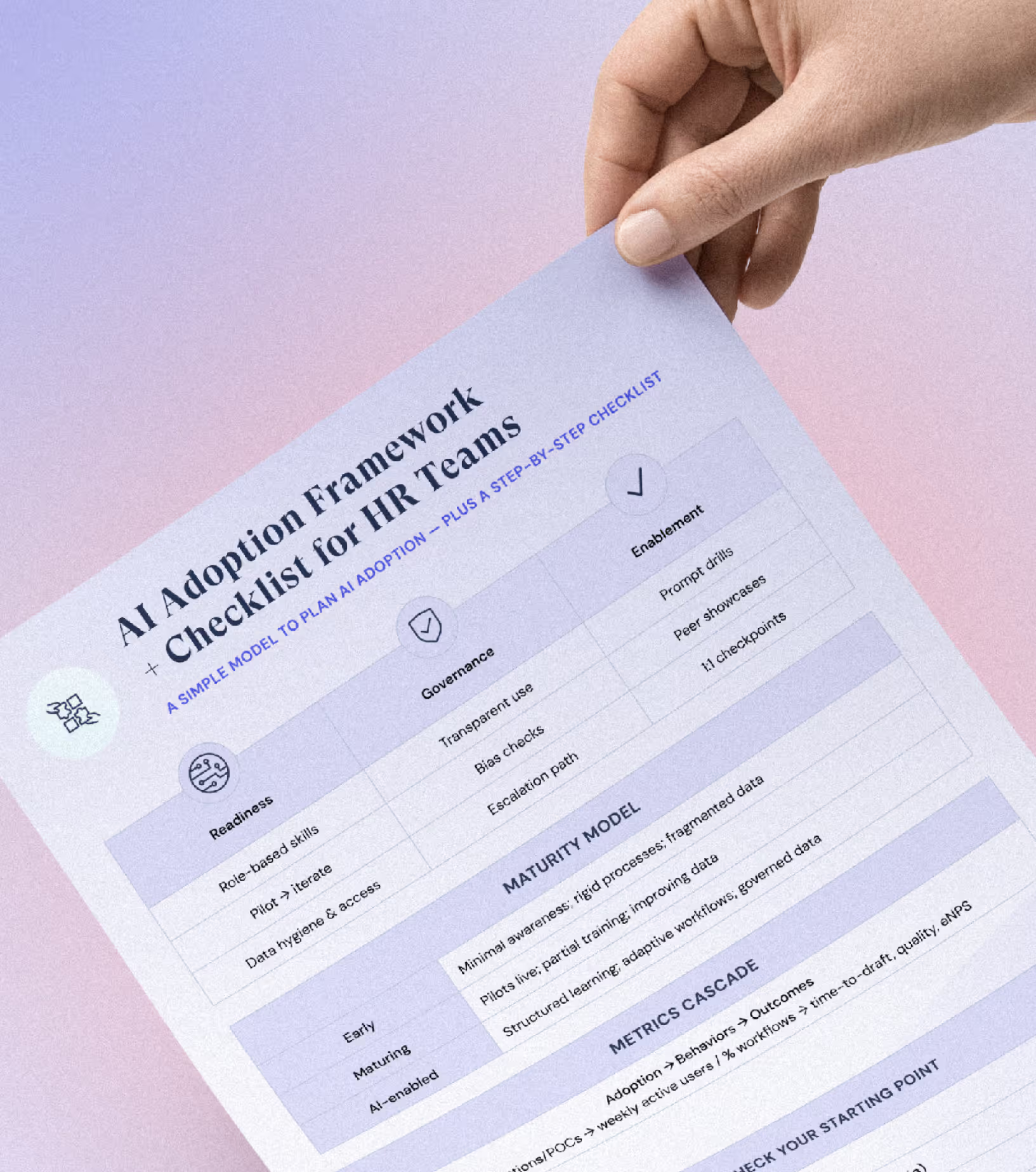





Bring clarity & structure to AI-powered people ops
Leapsome’s AI Copilot helps HR and managers run better reviews, build competency frameworks, and guide development with context-aware feedback and best practices.





Trend 3:
The AI skills gap




-compressed.avif)
